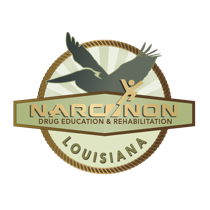Athletes and Addiction

One of the downsides to being an athlete is you are prone to minor or major injuries, especially in contact sports. I have met many athletes who were prescribed Oxycontin or some other narcotic pain killer due to surgery, back, knee, or joint pain, etc. These athletes become dependent on those drugs rapidly, and an addiction can develop.
This dependence is a common occurrence in sports despite one’s age or status. Addiction does not discriminate and cannot decipher whether you are in a high school league, minor league, or even a pro league.
I have witnessed athletes in high school with full-blown cocaine, alcohol, heroin, or other opioid-related addictions. I would often ask them how this addiction developed and a very large percentage, probably seven out of ten people responded it started with prescription pain pills prescribed by a doctor after a sports-related injury. The second large percentage were introduced drugs and alcohol at a house party after homecoming or on the weekend after a game.
Many pro-athletes have some variation of addiction, combining a variety of steroids, cocaine, opioids, alcohol, women, or gambling. The strange part is many of them do not start their athletic career as an addict because they probably would not have made it very far as an athlete with a full-blown addiction or even a minuscule one. The lifestyle of a famous and accomplished athlete turned addict becomes a dark life.

One that stands out is Tyler Skaggs of the Los Angeles Angels. Just over one year ago on July 1, 2019, he was found dead. NBC reported Skaggs was in good health yet in his hotel room, he was unresponsive and there were no signs of trauma. Upon medical examination, a toxicology report found Tyler’s system contained alcohol, Fentanyl, and Oxycodone. Skaggs, at 27 years of age, ultimately succumbed to an overdose.
2014 was not a good year for Skaggs. He underwent a Tommy John surgery that kept him out of commission for 12 months. (A Tommy John surgery is named after major league baseball pitcher Tommy John who received the surgery at the height of his career. It is a surgical procedure where a healthy tendon, usually taken from an arm or sometimes a leg, is used to replace a torn ligament in an arm. It is safe to assume he obtained some opioid prescriptions for pain.
The question is, did he continue to use after the healing process? More importantly, how did his franchise the Los Angeles Angels or Major League Baseball not catch the continuous use of alcohol or prescription drugs? Is there a hole in the system? If the players are being tested frequently for steroids or other drugs of abuse according to the MLB drug policy, how is this possible?
Yahoo Sports reported that Skaggs was getting his supply from a fellow employee of the Los Angeles Angels, Eric Kay. There are texts between Kay and Skaggs indicating drug deals were occurring. The South Lake Police Department had Kay under an ongoing investigation long before Skaggs’s death. There are also rumors of Kay distributing Oxycodone to multiple other Angels employees. Several other players were aware of Skaggs’s opioid use. No one said a word, and the Angles management denies all involvement of his drug use or even being aware of his addiction.
Following Skaggs’s death, the MLB reported they would look over the drug policy and revise it. While this could help baseball players in the future, there still needs to be some sort of internal monitoring by each franchise, lest the franchise itself be penalized. Because while a positive drug test for Skaggs for which he was sent to treatment could have saved his life, someone within the organization actively pushing or turning a blind eye will perpetuate the use.
Sources:


